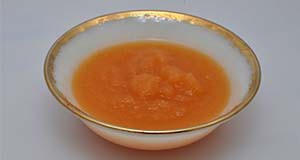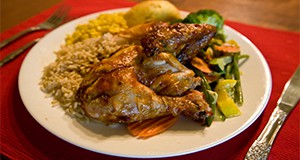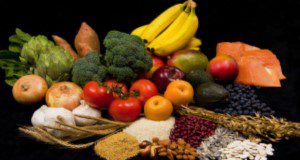Arthritis is the swelling or tenderness of the joints, and one in four adults within the United States have been diagnosed with some type of it. Arthritis can happen because of genetics and aging, but other factors, such as diet and lifestyle, may contribute to it. This new 5-page publication of the UF/IFAS Food Science and Human Nutrition Department describes the modifiable factors contributing to arthritis and tips to reduce risk for arthritis. It also includes some relevant recipe ideas. Written by Sarah Curl, Jodi Fitzgerald, Danielle Nelson, and Jeanette Andrade.
https://edis.ifas.ufl.edu/fs398
Tag: Food Science and Human Nutrition
Seven New Spanish Translations in Food Science and Human Nutrition

The following new Spanish translations have been published in the Food Science and Human Nutrition Department:
- FS291/FSHN15-10S Enfermedad renal crónica: fósforo y su dieta by Nancy J. Gal, Lauren Headrick, Kate Bennett, and Wendy J. Dahl http://edis.ifas.ufl.edu/fs291
- FS292/FSHN16-3S Datos sobre grasas y aceites by Tiffany N. Stodtko and Wendy J. Dahl http://edis.ifas.ufl.edu/fs292
- FS293/FSHN16-9S Enfermedad renal crónica: Potasio y su dieta by Ashley R. Kendall, Nancy J. Gal, and Wendey J. Dahl http://edsi.ifas.ufl.edu/fs293
- FS294/FSHN16-1S Alimentos en puré: Guía para comidas rápidas by Wendy J. Dahl http://edis.ifas.ufl.edu/fs294
- FS295/FSHN12-18S Conteo de carbohidratos: Comidas para la Diabetes by Cassie Rowe, Jamila R. Lepore, and Wendy J. Dahl http://edis.ifas.ufl.edu/fs295
- FS296/FSHN16-4S Beneficios para la salud del aceite de olive y extractos de oliva by Wendy J. Dahl, Michael A. Tandlich, and Julie England http://edis.ifas.ufl.edu/fs296
- FS297/FSHN16-8S Una guía sobre probióticos y salud by Wendy J. Dahl http://edis.ifas.ufl.edu/fs297
Pureed Food: Guide to Quick Meals

Puréed foods are an important source of nutrients for those who have problems chewing or swallowing. A puréed food is any item that has been processed into a smooth and uniform texture and therefore does not require chewing. Purées can be made from most foods and this guide provides some tips for fast and easy to prepare puréed foods. This four-page fact sheet covers the preparation of puréed foods from canned vegetables and fruits; beans, peas, and lentils; and mixed dishes. It also provides a useful example meal plan. Written by Wendy J. Dahl, and published by the Food Science and Human Nutrition Department.
http://edis.ifas.ufl.edu/fs277
Datos sobre la proteina
 Our bodies are made of many proteins. They can make 11 of the amino acids that are needed to make protein but cannot make the other nine, so we must get them from our diet. This 3-page fact sheet is the Spanish version of Facts about Protein (FSHN15-01/FS261). It provides an overview of protein basics, roles of proteins in the body, recommended intake, sources of protein, and healthier protein choices. Written by Nicole C. Agro and Wendy J. Dahl, and published by the UF Department of Food Science and Human Nutrition.
Our bodies are made of many proteins. They can make 11 of the amino acids that are needed to make protein but cannot make the other nine, so we must get them from our diet. This 3-page fact sheet is the Spanish version of Facts about Protein (FSHN15-01/FS261). It provides an overview of protein basics, roles of proteins in the body, recommended intake, sources of protein, and healthier protein choices. Written by Nicole C. Agro and Wendy J. Dahl, and published by the UF Department of Food Science and Human Nutrition.
http://edis.ifas.ufl.edu/fs272
